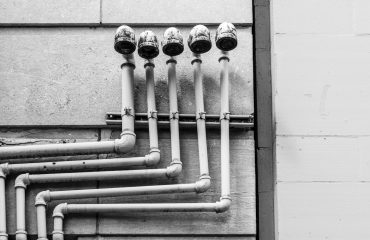In today’s rapidly evolving business landscape, stagnation is a death sentence. Organizations that thrive are those that embrace a culture of continuous improvement – a commitment to constantly seeking better ways of doing things. This isn’t just about incremental changes; it’s about fostering a mindset where improvement is ingrained in every aspect of the organization, from the top down.
Understanding the Foundation: What is Continuous Improvement?
Continuous improvement, often referred to as Kaizen (a Japanese term meaning “change for the better”), is a philosophy that emphasizes ongoing incremental improvements to processes, products, and services. It’s not about revolutionary overhauls, but rather a series of small, manageable changes that accumulate to create significant positive impact over time. This approach encourages everyone within the organization to identify areas for improvement and contribute to solutions. It’s about proactively identifying inefficiencies, reducing waste, and enhancing quality – not just reacting to problems after they arise.
Building the Pillars: Key Elements of a Continuous Improvement Culture
Creating a successful continuous improvement culture requires a multi-faceted approach. Several key elements must be in place to support and sustain this ongoing effort. These include:
- Leadership Commitment: Top-level management must champion the initiative, actively participating and demonstrating a commitment to change. This sets the tone for the entire organization and ensures resources are allocated appropriately.
- Employee Empowerment: Empowering employees to identify and suggest improvements is crucial. This requires creating a safe space where individuals feel comfortable sharing ideas without fear of retribution. Providing training and resources to support their efforts is also essential.
- Data-Driven Decision Making: Continuous improvement relies on data to identify areas for improvement and measure the impact of implemented changes. Establishing clear metrics and tracking progress are vital to demonstrate success and guide future improvements.
- Open Communication and Collaboration: Effective communication is key to sharing ideas, feedback, and best practices across teams and departments. Collaboration fosters a sense of shared ownership and accountability for improvement efforts.
- Regular Feedback and Recognition: Regular feedback loops ensure that improvements are consistently evaluated and adjusted as needed. Recognizing and rewarding contributions to continuous improvement reinforces positive behavior and motivates further engagement.
Implementing the Strategy: Practical Steps for Cultivating Kaizen
Implementing a continuous improvement culture requires a strategic approach. Here are some practical steps organizations can take:
- Define Clear Goals and Objectives: Establish specific, measurable, achievable, relevant, and time-bound (SMART) goals for improvement. This provides a clear direction and helps track progress.
- Identify Key Processes for Improvement: Focus on processes that have the greatest impact on efficiency, quality, or customer satisfaction. Use tools like process mapping to visualize and analyze these processes.
- Implement Improvement Tools and Techniques: Utilize various tools such as Lean methodologies, Six Sigma, 5S, and Kaizen events to systematically identify and address areas for improvement.
- Train Employees on Continuous Improvement Principles: Provide training to equip employees with the knowledge and skills necessary to participate effectively in improvement initiatives.
- Establish a Feedback Mechanism: Create a system for collecting and analyzing feedback from employees, customers, and other stakeholders. This provides valuable insights into areas for improvement.
- Regularly Review and Adjust: Continuously monitor and evaluate the effectiveness of implemented improvements, making adjustments as needed to ensure ongoing progress.
Measuring Success: Tracking Progress and Demonstrating ROI
Measuring the success of a continuous improvement culture is essential to demonstrate its value and sustain momentum. Key performance indicators (KPIs) should be established to track progress against defined goals. These might include:
- Reduced waste and defects: Tracking reductions in material waste, production errors, or customer complaints.
- Improved efficiency and productivity: Measuring increases in output, reduced cycle times, or improved resource utilization.
- Enhanced customer satisfaction: Monitoring customer feedback and satisfaction scores.
- Increased employee engagement: Measuring employee morale, participation in improvement initiatives, and suggestions for improvement.
- Cost savings: Tracking reductions in operational costs resulting from improved efficiency and reduced waste.
By regularly monitoring these KPIs, organizations can demonstrate the tangible return on investment (ROI) of their continuous improvement efforts and showcase the value of this culture to stakeholders.
Overcoming Challenges: Addressing Common Obstacles
Implementing a culture of continuous improvement is not without its challenges. Common obstacles include resistance to change, lack of resources, insufficient training, and poor communication. To overcome these challenges, organizations need to:
- Address resistance to change proactively: Communicate the benefits of continuous improvement clearly and address concerns transparently. Involve employees in the process to foster buy-in.
- Secure adequate resources: Allocate sufficient time, budget, and personnel to support improvement initiatives.
- Provide comprehensive training: Equip employees with the necessary skills and knowledge to participate effectively.
- Foster open and transparent communication: Ensure regular communication and feedback loops to keep everyone informed and engaged.
- Celebrate successes and learn from failures: Recognize achievements to reinforce positive behavior and analyze failures to identify lessons learned.
By proactively addressing these challenges, organizations can create a sustainable culture of continuous improvement that drives long-term success.
In conclusion, cultivating a culture of continuous improvement is a journey, not a destination. It requires consistent effort, commitment, and a willingness to adapt and evolve. By embracing the principles of Kaizen and implementing the strategies outlined above, organizations can unlock their full potential and achieve sustainable growth in an ever-changing world.
Tags: Continuous Improvement, Kaizen, Lean Management, Six Sigma, Process Improvement




